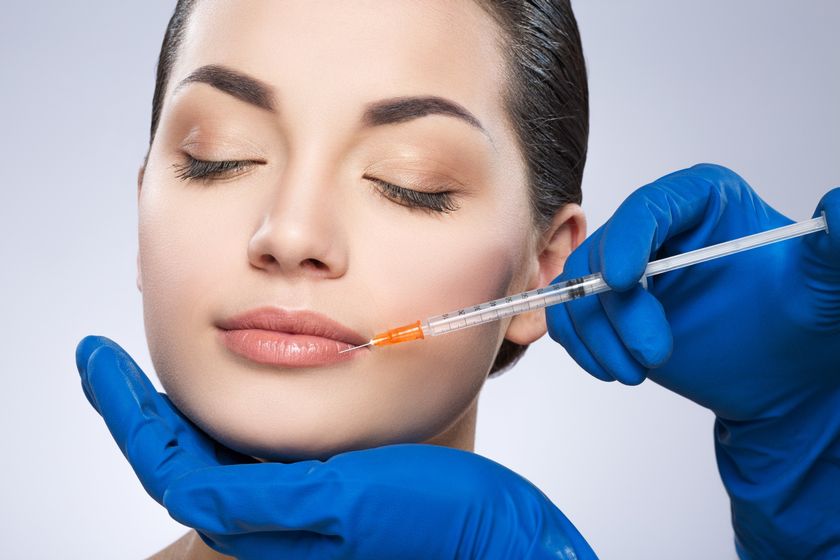- Sections :
- Crime & Public Safety
- Restaurants & Food
- Sports
- More
Summer’s over, but the autumn and winter seasons’ effect on skin is still severe
THE WOODLANDS, TX – We may finally be moving past the swimsuit and suntan weather of summer, but area autumn and winter are still formidable foes of healthy skin. Dr. Oben Blair Ojong, D.O., F.A.A.D., is a Texas-based, double-board-certified dermatologist and Mohs surgeon who brought her significant medical skills to The Woodlands with Rêve Dermatology and Aesthetics.
Dr. Ojong has some words of advice and warning for those who think Lone Star State autumn and winter are a respite from the elements. From the relative inconvenience of eczema to the chances of life-threatening skin cancer, Woodlands residents should keep their guard up to protect their skin.
Eczema is an inflammatory condition of the skin that leads to a reduction in skin moisture and a breakdown in the skin barrier. Because your skin cannot make sufficient amounts of its own natural moisturizing factors,the skin is naturally drier than that of a person’s who does not have eczema. People who suffer from eczema have dry, itchy, red and scaly skin if it is not supplemented with topical moisturizers on a daily basis.
With dropping temperatures comes dropping humidity. “During drier weather like in the fall and winter, because the humidity goes down, there is less moisture in the air. As a result people with eczema lose even more moisture from their skin into the environment. As such their rash gets worse and the skin overall suffers,” said Dr. Ojong.
Eczema is classified as mild, moderate or severe. For mild eczema, the mainstay of treatment is consistent skin moisturizing with lotions that are rich in ingredients like ceramides, reducing shower temperature to lukewarm, keeping shower time less than 5 - 10 minutes, moisturizing skin immediately after showers while the skin is still damp, using heavier moisturizers over lighter products like lotions that are more appropriate in the warmer more humid months.
“For itchy spots, a quick remedy is over-the-counter hydrocortisone 1% cream; however, do not use this longer than two weeks at a time unsupervised by a doctor,” she warned.
Moderate eczema usually needs the attention of a board-certified dermatologist. In addition to everything that is done for mild eczema, it is additionally treated with stronger prescription medication, including creams, and sometimes systemic medication.
Severe eczema can be very debilitating and involve the entire body sometimes. Patients with severe eczema are treated – in addition to all other measures – with heavy duty systemic medications, light therapy, and other measures.
“A great home remedy that can be used to maintain the health of the skin are bleach baths that can be used once or twice a week,” said Dr. Ojong. “To make one, add a quarter to a half cup of common 5% household bleach to a bathtub full of water – about 40 gallons – and soak your torso or just the affected part of your skin for about ten minutes.”
While moisturization and other topical treatments can assist with eczema in the autumn and winter months, the holiday season doesn’t give people a respite from worrying about skin cancer.
“While in the winter we overall have shorter daytime hours, it does not mean our risk for skin cancer has been eliminated. I always say, if you can tell it is daytime, you are getting exposed to UV damage from the sun,” said Dr. Ojong.
She stresses how important it is to continue practicing sun avoidance, especially during peak sunshine hours of 10 a.m. to 4 p.m., including the wear of protective clothing like long sleeves and wide-brimmed hats and sunglasses. In addition, wearing a broad spectrum sunscreen with SPF 30 or greater and reapplying every two hours is always beneficial and recommended by the American Academy of Dermatology. Another tip to see how much ultraviolet radiation exposure you are getting is to look at the UV index on the weather app on your cell phone – the higher the UV index, the more exposure you are getting be it on a sunny or cloudy day.
“Everyone is at risk for skin cancer, but some people are more at risk based on their skin type and how it reacts to the sun,” said Dr. Ojong. “In general, people of all races with lighter skin tones, lighter colored eyes, or blonde or red hair are at higher risk for skin cancer because they have lower levels of melanin production in their skin.”
Other factors that increase your risk would be sunburns; the more sunburns a person has over their lifetime, the higher his or her risk for skin cancer. Smoking is another risk factor for skin cancer. Additionally, if you have many moles or spend lots of time in the sun because of your occupation, it is advisable to see a dermatologist at least once a year for a skin cancer screening exam.
“If you have a spot on your body that is bleeding, not healing, or won’t go away after trying different over-the-counter remedies, consider seeing your dermatologist,” she said. “Melanoma, which is the third most common skin cancer, can be deadly.”
When self-assessing for possible melanoma, she says things to look out for follow the acronym ‘ABCDE’ – A for Asymmetry, B for irregular borders, C for more than three colors in the lesion, D for diameter greater than a pencil eraser or 6mm, and E for Evolution or any change in a lesion you have always had or a new lesion that was never there.
“In general, I recommend everyone see a board certified dermatologist at least once a year for a preventative skin cancer screening.”
Ojong received her Bachelor’s of Science in biochemistry from Viterbo University in Wisconsin, then attended Ohio University Heritage College of Osteopathic Medicine, where she received her Doctor of Osteopathic Medicine Degree. She was trained at Larkin Palm Springs Community Hospital in Miami, Florida for her dermatology residency.
“I was always fascinated by the skin with it being the largest organ in our bodies. It is our first line of defense against all disease,” she told Woodlands Online. “After rotating through many medical and surgical specialties while in medical school, I chose dermatology because – while it is a specialty – I was still able to treat the patient in a holistic manner. This is important to me, since treating most dermatologic and cosmetic conditions involves delving into knowing who the patient is – their lifestyle, their personality, stressors, and the like – in order to provide them with customized scientific evidence-based treatments that the patient would likely adhere to.”
Despite her nearly lifelong travels across the nation and globe, she and her family have happily settled their roots here in the township.
“I love The Woodlands. Myself, my husband, and our two daughters enjoy living here because of the sense of community and family that is very evident and palpable wherever you go. Outside of work, my family and I enjoy spending time at Hughes Landing visiting various restaurants; we also enjoy shopping at Market Street. Our two-year-old loves playing at the Commons there. There is so much to do around here and we are still exploring the area.”
As the drier weather approaches, those in danger of skin issues are encouraged to self-assess, use proper moisturization and protection, and to make an appointment with a dermatologist such as Dr. Ojong.









